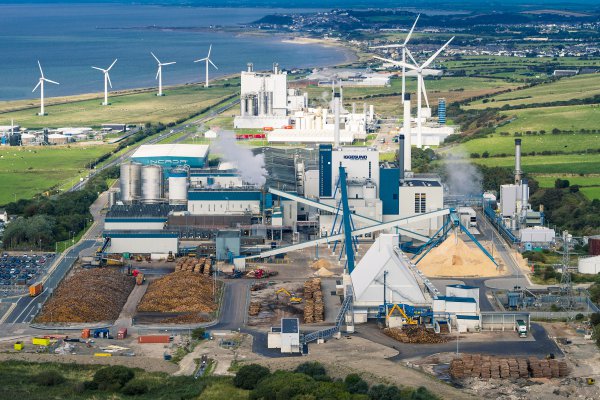Production at Iggesund Paperboard’s mill in the UK is now fully operational again. At the beginning of March the board machine was shut down for a rebuild, in which its oldest part, the press section, was replaced with cutting-edge technology. The rebuild will increase the machine’s capacity by 20,000 annual tonnes from 200,000 up to 220,000 and will also enable further quality improvements in the future.
Sidebar
Consumables

Nazdar welcomes AGA Color Solutions as partner in the Netherlands
Ink specialist Nazdar has welcomed AGA Color Solutions as a partner in the Netherlands, where it will distribute digital and screen printing inks.
Premier Paper Group aims to build on past success at The Print Show 2016
Plans to showcase new and slightly different products at this year’s event
The new, brighter UPM Sol lets your printed material shine
The UPM Sol family has renewed itself. UPM Sol is a premium coated mechanical sheet-fed grade with a blue-white shade known for its high optical brightness levels. Now UPM has introduced an enhanced version of the paper pushing its brightness even higher. The new UPM Sol, in gloss, silk and matt surface has been available as of 1st March 2016.
Stora Enso evaluates expansion of Ostrołęka Mill production
Stora Enso has decided to commence a feasibility study with the aim of expanding containerboard production at Ostrołęka Mill in Poland by 500 000 tonnes annually. The findings of a recently completed pre-feasibility study supported continuation of the process. The feasibility study, which is expected to be completed by the end of 2016, will evaluate the profitability of the possible expansion. The studied investment will be cost competitive and it has synergies with the newest containerboard machine in Ostrołęka, which went into production in 2013.
Sibress to show innovative measurement technology for flexo and gravure plates at Drupa 2016
Sibress, manufacturer of measurement and analysis systems for quality assurance in flexographic and package printing, will take advantage of Drupa 2016 to present the FC3D, a 3D measuring instrument for flexo plates enhanced with several new features, at its own Stand E32 in Hall 10.
RISI and TAPPI Announce TISSUE 2017
New event to provide insight into global tissue market developments and manufacturing trends.

Toyo Ink Group to Showcase Comprehensive Packaging Solutions at Drupa
Toyo Ink Co., Ltd., Toyo Ink Arets N.V. and Toyo-Morton Co., Ltd. announced today that they will be exhibiting together at drupa 2016, which runs May 31 to June 10 in Düsseldorf, Germany. The three firms will jointly showcase a wide range of printing and packaging solutions designed to help brand owners and package printers reduce wastage throughout the supply chain, lesson environmental risks, enhance food safety and achieve uniform packaging quality worldwide.
Bordeaux will offer a complete range of ink solutions at DRUPA
Bordeaux to present new ink solutions for an endless range of applications at DRUPA
RITRAMA USE ENVIRONMENTALLY FRIENDLY PET LINERS
Ritrama SpA, the leading Italian manufacturer of self-adhesive materials with 23 production facilities worldwide has announced that their Chilean production site has started a partnership with a recycling company in Chile. This is a sustainable recycling project, which uses PET liners to be transformed into clamshell and trays for packaging.
Grafityp Selfadhesive Products are organizing the international GrafiWrap Design Competition for the fifth year in a row !
Once again a magnificent Audi R8 LMS race car from the Belgian Audi Club Team WRT #1 is waiting to be transformed into the winning design. Participants from all over the world can register for free on our website www.grafiwrap.com and afterwards download the required basic designs and information. Your own inspiration and creativity, supplemented by the use of our free patterns, will be judged by our skilled jury.







